Remember when your living room was the height of sophistication? When you’d flip through Better Homes and Gardens with a highlighter, marking ideas for your next home makeover? The 1980s were a distinctive era for interior design, when “modern” meant something entirely different than it does today.
1. Mauve and Dusty Blue Everything

The color palette of the early 1980s was unmistakable, with mauve and dusty blue reigning supreme in every stylish home. You couldn’t walk into a department store without seeing endless aisles of coordinating bedding sets, towels, and decorative accessories in these signature hues. These weren’t just colors but statements of contemporary taste, often paired with cream or beige to create what decorating shows called a “sophisticated atmosphere.” Better Homes & Gardens has some tips for reintegrating mauve into a modern space, blending vintage and contemporary.
The fascination with these colors extended beyond soft goods into permanent fixtures, with bathroom suites and kitchen appliances available in these trendy tones. Families saved for months to replace perfectly functional white toilets with mauve ones, while dusty blue refrigerators signaled to visitors that you were keeping up with the times. The commitment to these colors was so complete that some homeowners even installed carpeting in these shades, a decision many would later question during the minimalist 1990s.
2. Southwestern Geometric Patterns
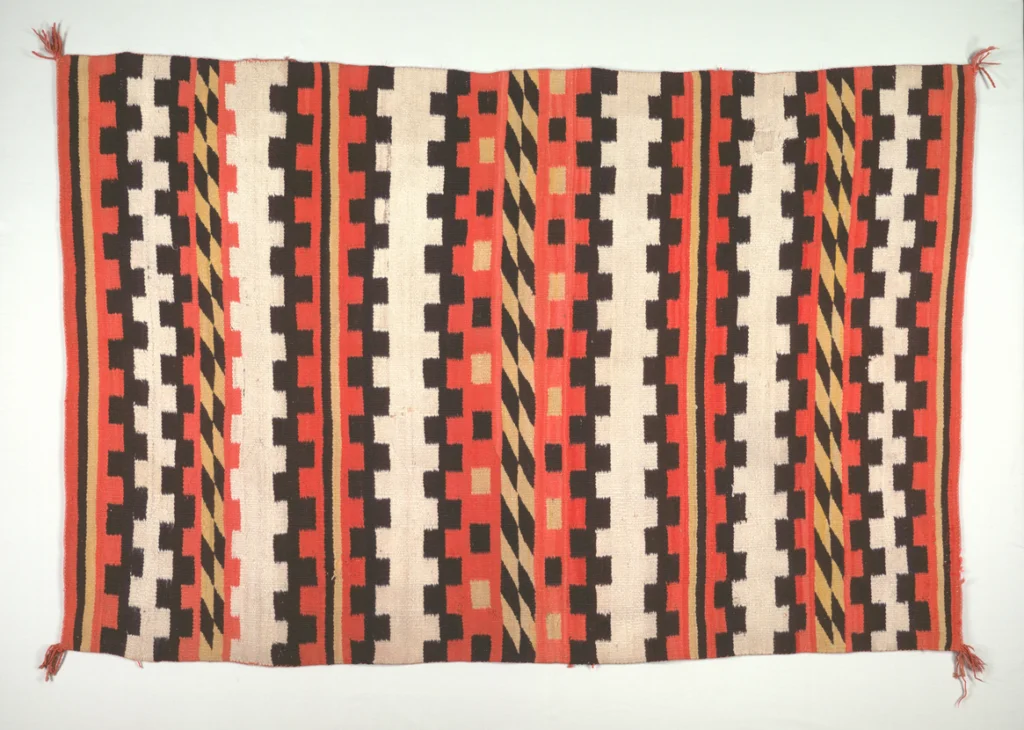
Bold geometric patterns inspired by Southwestern and Native American designs covered everything from sofas to wallpaper borders. Living rooms across America featured angular patterns in terracotta, turquoise, and deep blue, often accentuated with silver or brass elements. These designs appeared on oversized sofas with thick cushions, statement armchairs, and those decorative throw pillows your spouse always complained about. For more about this pattern’s deeper history, Sean Design dives into its origins and the greater context of its place in the South.
The Southwestern trend wasn’t limited to upholstery—it extended to wall art, area rugs, and even dinner plates. You might remember those clay-colored ceramic vases with geometric cutouts, strategically placed on glass coffee tables to catch the afternoon light. The more dedicated decorators even installed wallpaper with matching borders, transforming ordinary suburban homes into spaces that looked like they belonged on the set of “Dallas” or “Dynasty.”
3. Oak Cabinets and Furniture
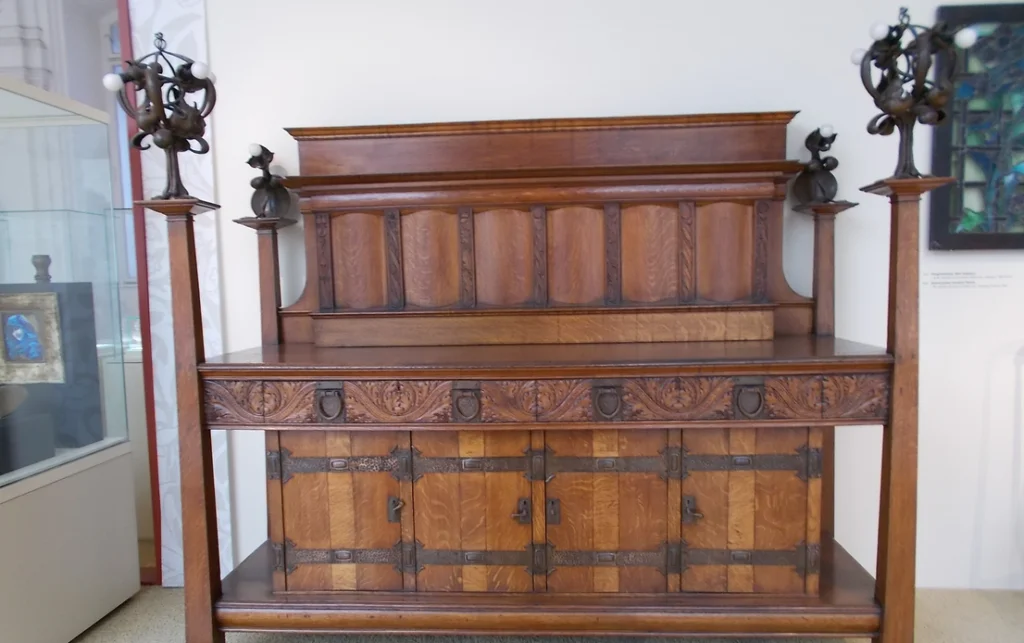
Nothing said “I’ve arrived” in 1980 quite like solid oak furniture with its distinctive honey-colored finish and prominent grain. Kitchen cabinets in medium-toned oak were the coveted replacement for outdated dark walnut or painted cabinets from the 1970s. The kitchen renovation would often be capped off with coordinating oak trim, crown molding, and those wooden plaques with country sayings that hung above the stove. According to Better Homes & Gardens, deep wood tones are actually more modern than ever, meaning this design has come full circle.
The oak obsession continued throughout the home with massive wall units designed to display your collection of Royal Doulton figurines and store your brand-new VCR. You might recall the heaviness of oak coffee tables with those special glass inserts and the matching end tables that required monthly polishing with lemon-scented Pledge. For those who couldn’t afford solid oak, there were laminate alternatives that gave the appearance of wood grain without the premium price tag.
4. Brass and Glass Everywhere
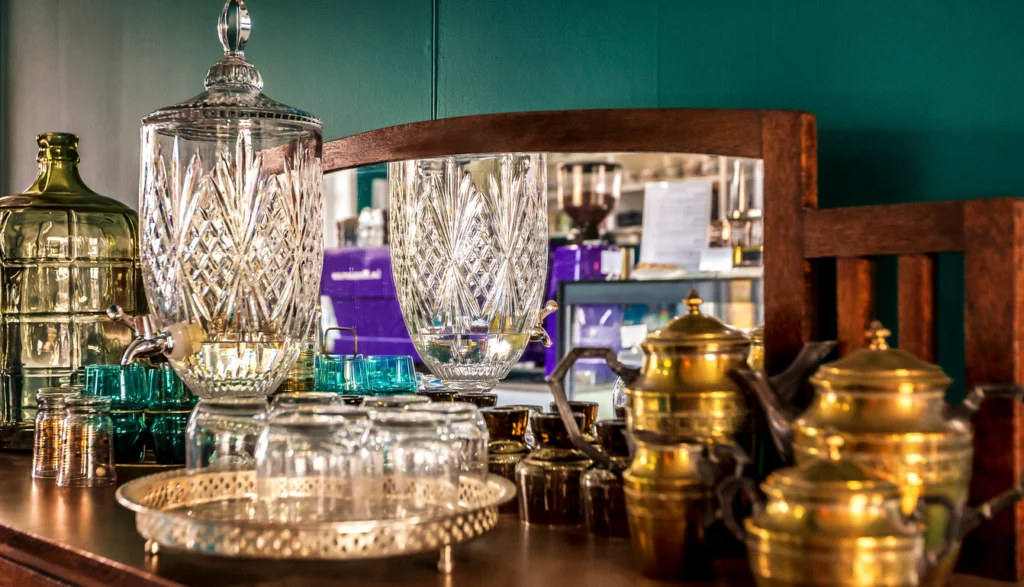
Brass fixtures were the jewelry of the modern 1980s home, adding sparkle to every room with their warm golden glow. From bathroom faucets to cabinet handles, doorknobs to light fixtures, brass finishes indicated that a home had been recently updated with the latest design trends. Combined with glass—particularly in the form of coffee tables, dining tables, and display cabinets—brass created that special 1980s look that magazines like “House Beautiful” couldn’t get enough of.
The quintessential brass and glass piece was the étagère—those open shelving units that stood tall in living room corners, displaying everything from vacation souvenirs to crystal collectibles. Remember how you’d spend Sunday afternoons carefully dusting each shelf and polishing the brass poles until they gleamed in the sunlight? Even the frames for family photos received the brass treatment, coordinating perfectly with those brass-armed floor lamps that arched dramatically over reading chairs.
5. Track Lighting and Ceiling Fans
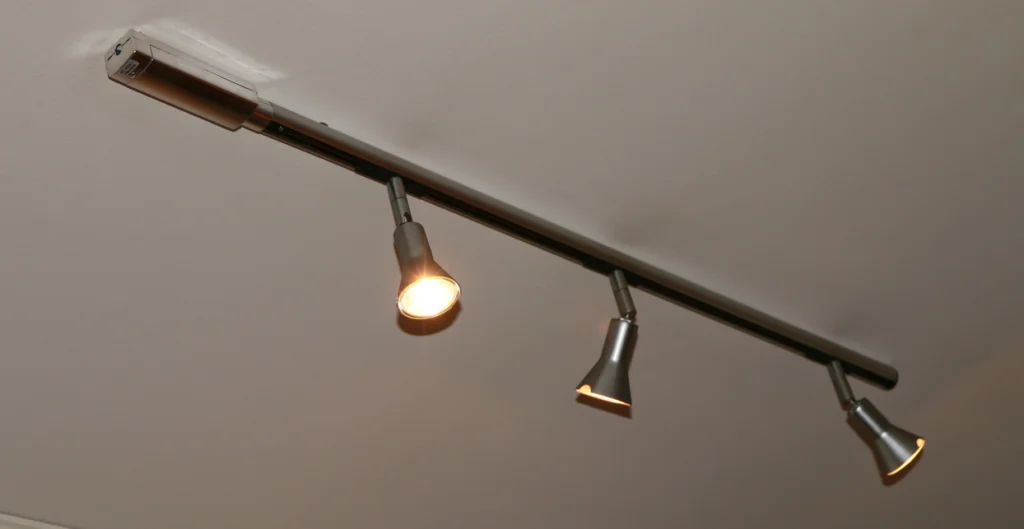
Lighting took on architectural significance in the 1980s with the widespread adoption of track lighting systems that showcased your wall art and collectibles. These adjustable spotlights on metal tracks replaced old-fashioned ceiling fixtures, allowing homeowners to create dramatic effects by highlighting specific areas of their rooms. Installing track lighting was often a weekend project that involved mysterious wiring diagrams and at least one trip back to the hardware store for a forgotten part.
No modern 1980s home was complete without a ceiling fan (or several), preferably with a built-in light fixture and wood-look blades. These functional sculptures hung from ceilings in living rooms, bedrooms, and even kitchens, often featuring brass accents to coordinate with other fixtures in the room. The remote control option was the ultimate luxury, allowing you to adjust the fan speed without getting up from your oak-framed sofa, while the pull chains dangled with decorative finials that matched your decor theme.
6. Peach and Forest Green Bathrooms
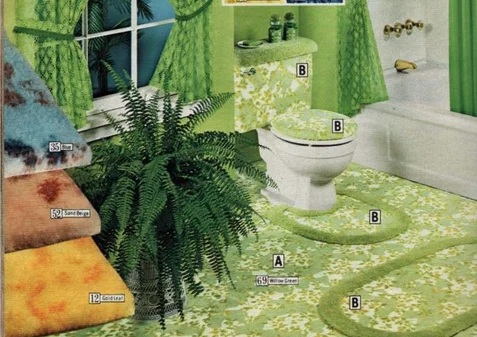
The bathroom became a canvas for color experimentation, with peach and forest green fixtures replacing the avocado and harvest gold of the previous decade. Coordinating tile work, often featuring small square tiles with contrasting grout, created a cohesive look that extended from the shower stall to the vanity backsplash. Complete bathroom sets included tissue box covers, toothbrush holders, and soap dishes that matched perfectly with the towels and bathmats.
The truly fashionable bathroom featured wallpaper with small floral patterns or vertical stripes, often with a coordinating border placed precisely at chair rail height. These decorative elements were complemented by brass-framed shower doors with obscured glass patterns and matching towel bars mounted at precise intervals around the room. The final touch was often a small arrangement of dried flowers, carefully placed on the back of the toilet tank or a small glass shelf.
7. Vertical Blinds and Balloon Valances
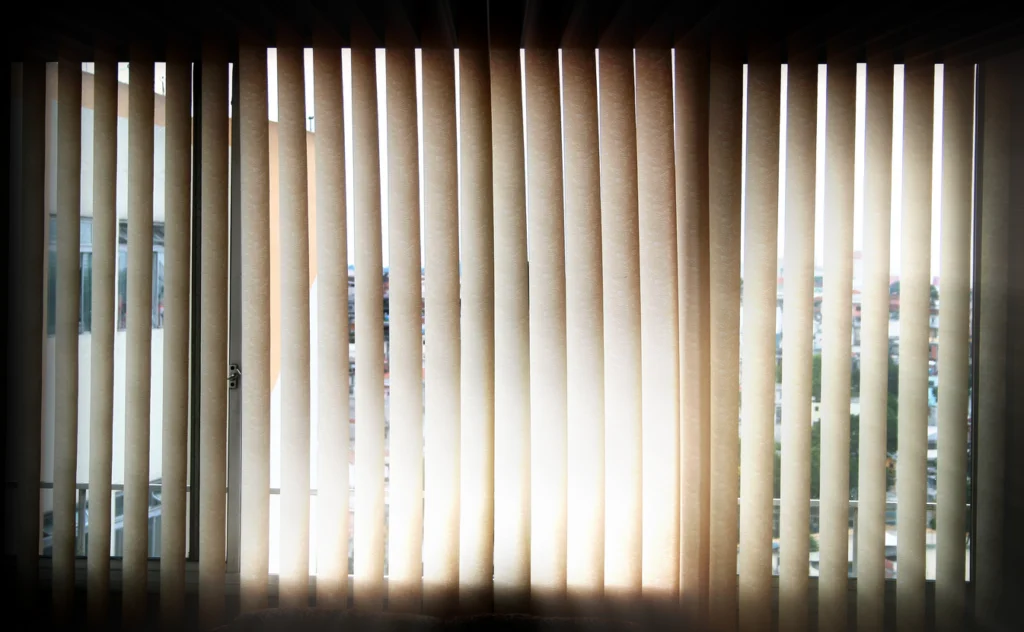
Window treatments underwent a revolution in the 1980s with the introduction of vertical blinds that replaced traditional curtains in many modern homes. These adjustable slats, typically in neutrals like white, cream, or gray (or sometimes in mauve or dusty blue for the truly committed), offered precision light control and a sleek contemporary look. The soft clicking sound they made when catching the breeze from an open window became part of the soundtrack of 1980s domestic life.
For more formal rooms, balloon valances and swags created elaborate window crowns that framed the view while making a dramatic decorative statement. These fabric creations required yards of material, gathering tape, and specialized hardware to achieve their puffy, cloud-like appearance. Window treatment departments in department stores were staffed with consultants who helped homeowners coordinate these complex systems with their existing decor, often suggesting matching tiebacks, tassels, and other embellishments to complete the look.
8. Mirrored Walls and Furnishings
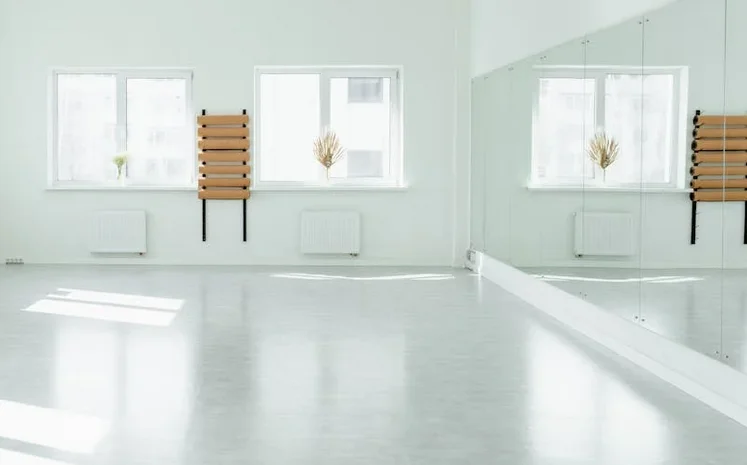
Nothing said sophistication quite like the strategic use of mirrors to “open up” your living spaces in 1980s home design. Full mirrored walls transformed ordinary dining rooms into what decorating shows called “expansive entertaining areas,” creating the illusion of doubled square footage in your split-level suburban home. These reflective surfaces bounced light around the room and gave dinner guests the slightly disorienting experience of watching themselves eat from multiple angles.
The mirror trend extended to furniture pieces like coffee tables, headboards, and those distinctive cubed side tables with mirrored panels on all sides. You might remember the special glass cleaner you kept on hand specifically for these surfaces, and how quickly they revealed every fingerprint from the kids or your bridge club friends. Despite the maintenance challenges, these gleaming surfaces brought a touch of Hollywood glamour to middle-class homes across America, making your living room feel like a set from “Dynasty.”
9. Silk Flower Arrangements in Porcelain Vases

Permanent botanical displays reached their artistic peak in the 1980s, with elaborate silk flower arrangements serving as status symbols in modern homes. These weren’t your mother’s plastic flowers but sophisticated compositions of silk peonies, roses, and tropical blooms arranged in porcelain vases with classical motifs or Asian-inspired designs. Department stores devoted entire sections to these dust-collecting masterpieces, often placing them near the Lladró figurines and Hummel collectibles that completed the sophisticated home.
The most impressive arrangements stood three feet tall on entrance hall tables or dominated dining room centerpieces with their perpetual blooms. You might recall the seasonal rotation of these arrangements—pastel flowers for spring, sunflowers for summer, and those ubiquitous dried flower compositions with peacock feathers for fall and winter. Despite their initial expense, these arrangements were considered investments in decor that wouldn’t wilt or need watering, justifying their prominent placement in the homes of forward-thinking decorators.
10. Country Goose Decor and Heart Cutouts
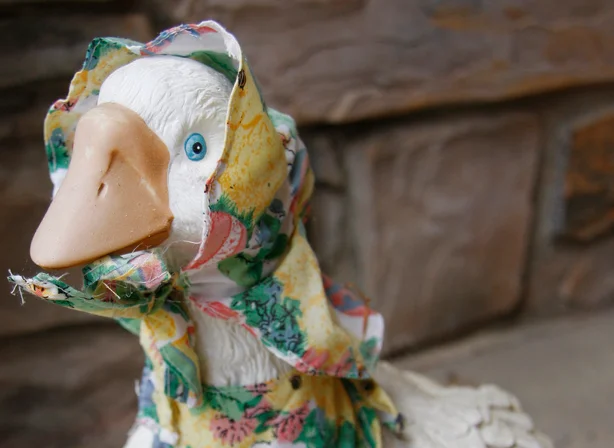
The “country” look brought warmth to the otherwise sleek 1980s modern aesthetic, with goose-themed decorations leading the charge into kitchens and breakfast nooks nationwide. Ceramic geese wore seasonal outfits ranging from raincoats for April to Santa suits for December, standing guard on countertops and windowsills throughout middle-class homes. These avian accessories were often accompanied by wooden plaques with folksy sayings about family and friends, usually featuring painted heart cutouts and vine designs.
The country aesthetic extended to kitchen textiles, with goose-patterned pot holders, oven mitts, and tea towels coordinating with heart-shaped cookie jars and canisters. Remember those wooden cradles filled with decorative eggs displayed on kitchen counters, or the goose-shaped coat hooks in your mudroom that held everything from baseball caps to your children’s backpacks? This heartwarming trend offered a comforting counterpoint to the otherwise angular and metallic elements of typical 1980s design.
11. Teak and Glass Dining Sets

The modern dining room of 1980 abandoned traditional dark wood in favor of teak dining sets with smoky glass tabletops supported by sculptural wooden bases. These tables, typically round or oval with an optional leaf for expansion, were surrounded by high-backed chairs with subtle curves and caned or upholstered inserts. The warm honey tones of the wood complemented both the mauve color scheme and the brass accents throughout the rest of your carefully coordinated home.
Complete dining sets included matching china cabinets with glass doors perfect for displaying your wedding crystal and the Noritake china you’d been collecting piece by piece with department store coupons. You might remember polishing the wooden elements of these sets with specialized teak oil before dinner parties, making sure the glass surfaces were spotless to reflect the light from your new brass chandelier. These dining sets represented significant financial investments for young families, often purchased with the assistance of store financing plans over several years.
12. Lucite and Acrylic Accessories
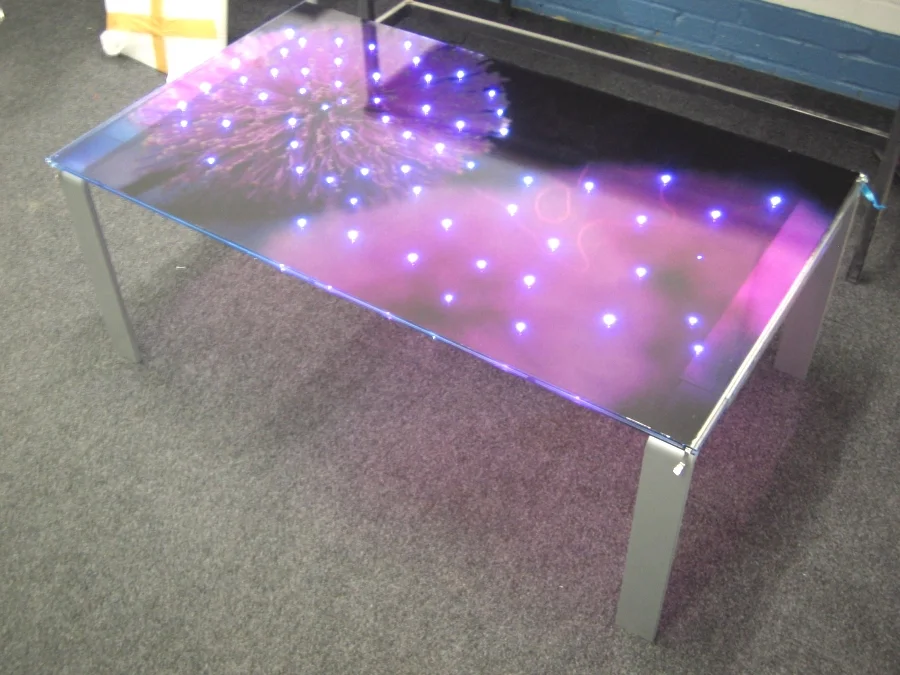
The ultimate statement in 1980s modernity was the integration of clear Lucite and acrylic accessories that seemed to float in space. Magazine racks, end tables, and those distinctive waterfall coffee tables with cascading edges brought a futuristic element to living rooms that were otherwise grounded in natural materials. These transparent pieces reflected light from every angle and created the illusion of more space in modest-sized rooms.
Smaller acrylic accessories included picture frames, tissue box holders, and those sculptural napkin rings you brought out for special occasions. Do you remember the clear telephones with neon internal components that lit up when ringing, or the acrylic lamps with brass accents that cast interesting shadows on your textured walls? These pieces added an element of surprise to rooms that might otherwise have seemed too coordinated, providing visual interest without introducing competing colors to your carefully planned mauve and blue palette.
Looking back from our era of minimalism and neutral palettes, the bold design choices of the 1980s might seem over the top, but they represented optimism and prosperity after the economic challenges of the 1970s. These decorative elements weren’t just about aesthetics but about creating spaces where families could gather, entertain, and show that they were keeping up with the changing times. Perhaps in another forty years, design enthusiasts will look back at our current obsession with farmhouse sinks and subway tile with the same nostalgic amusement we now direct at track lighting and brass étagères.


